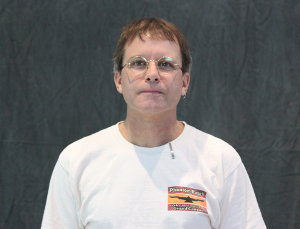Jay Nietling

I manage the networks and computing systems in the Department of Physics and Astronomy at UNLV. Previously I worked with the Information Science Research Institute (ISRI), a research group within the Department of Computer Science at UNLV, dedicated to identifying and advancing the state of the art in optical character recognition (OCR), text processing, and information retrieval. Previous to that I spent fifteen years in the Department of Computer Science and the College of Engineering managing the networks and systems there. Early in my career I worked on the first Unix systems at UNLV and setup the first local area network on campus with the help of my colleague Greg Wohletz. In Computer Science we like to think we pioneered a shared distributed network with mail, file, print, and authentication servers using free and open source operating systems and software then mostly deployed in the great commercial corporate laboratories like Bell Labs and Xerox PARC, and technically oriented universities such as MIT and Carnegie Mellon University which we strove to emulate. Before that, I hacked on Unix systems as a student of the late John Werth, Steve Sherman, the late Tom Schaffter, and later Tom Nartker and John Minor. A graduate student Bill Jackson was my mentor. Had Dr. Werth not left the university at the start of my graduate program I like to hope I would have finished an advanced degree concentrating on some aspect of the functional programming languages. As it is I only completed my Bachelors of Science in Computer Science soon after the department emerged from the Department of Mathematics. Just as a historical aside, it is believed my father, Lloyd Nietling, taught the first computing courses at UNLV (then Nevada Southern University) in the late 1960s as a professor in Mathematics. Yes, I have programmed from a Teletype Model 33, called up the computer over a phone line using an accoustic coupler, created small programs from something like this card punch, wrote my first programs to run on a CDC Cyber, and did my first graphical programs using this Tektronix terminal.
I now attempt to maintain and improve the Physics and Astronomy network originally built by my predicessor, John Kilburg who left us for Wall Street in 2011. This net supports personal desktops, experimental control, and data acquisition, and several clusters for computational physics and astronomy. Our network servers other than Cisco network hardware, are typically FreeBSD Unix systems while our computational servers are typically CentOS Linux systems.
Possibly Helpful Documents
Here are some documents I occasionally try to assemble to describe some features or facilities within Physics and Astronomy that are unique or non-obvious to newcomers. Computationally, we are a "Unix shop". Experimentalists use Microsoft systems for control, data aquisition, and analysis. But big computing is done on Unix machines. Unix and its differently named decendants were designed and used by programmers. Even MacOS X that looks pretty these days is ultimately a CMU Mach type kernel with a Freebsd like "user land" and administrative and user interface features derived from the system that ran on the NeXT computer . Even if you are an applied person, I urge to to explore tools like Mathematica, the R language for statistical computing and analysis, Scilab an open source Matlab clone, and Python with NumPy, SciPy, Matplotlib and Pandas. They run on Unix and Microsoft systems.
If you have not used a Unix (Linux, Freebsd, MacOS X) system before, it is useful to know how to navigate the system from the command line. The first link below is to a not horrible introduction to using the command interpreter we call "the shell".
- A command line crash course from the book Learn Python the HARD WAY
- How to add a shared network printer to your computer.
- How to setup a remote desktop connection from outside Bigelow Physics Building to a computer in BPB.
- Using the Physics and Astronomy open compute cluster.
- Using the Slurm resource manager in UNLV Physics and Astronomy.
References That Were Hard to Locate (Notes to self)
- Linux systemd is crap. NetBSD's startup system is the cleanest and most Unix-like in my opinion. FreeBSD has the best open source implementation of ZFS which is why it is great. Here's an article I just stumbled across somewhere about systemd. It has more details.
- Sun Rack II Power Distribution Units
- How to Create and Use a VeraCrypt Container
- The Realist Issue that originated the story about a guy in Nova Scotia moving rocks into a object viewable from space that appears in Unix fortune.